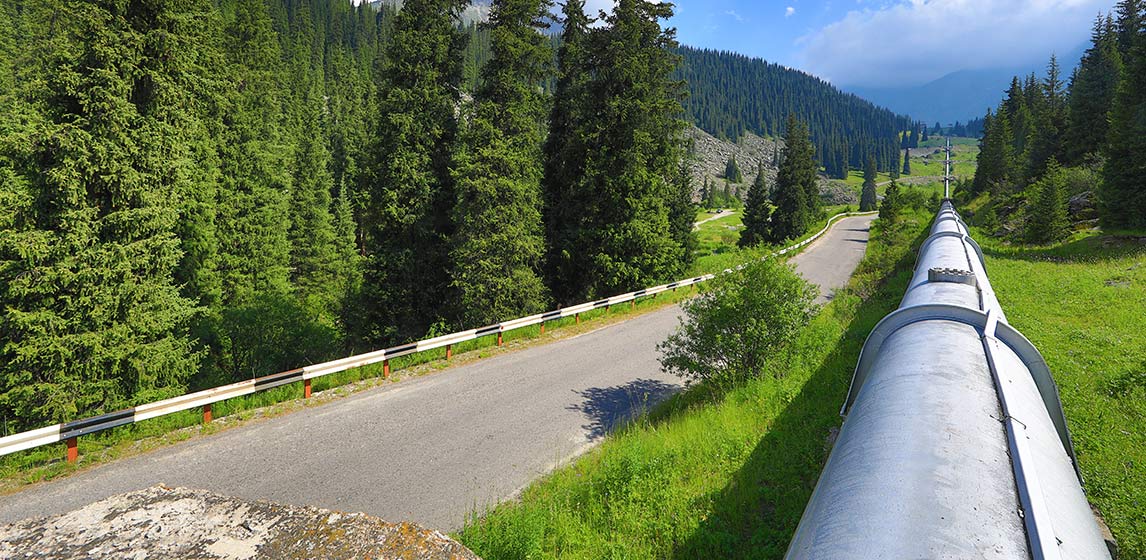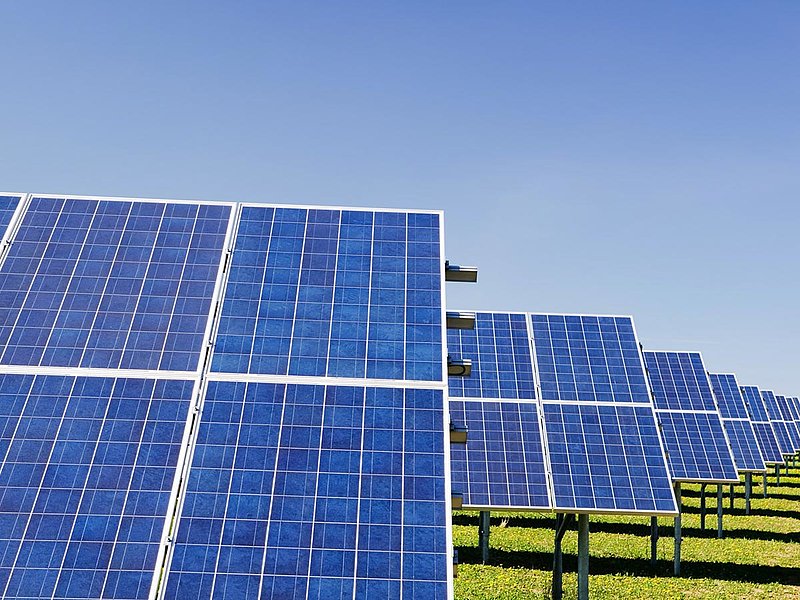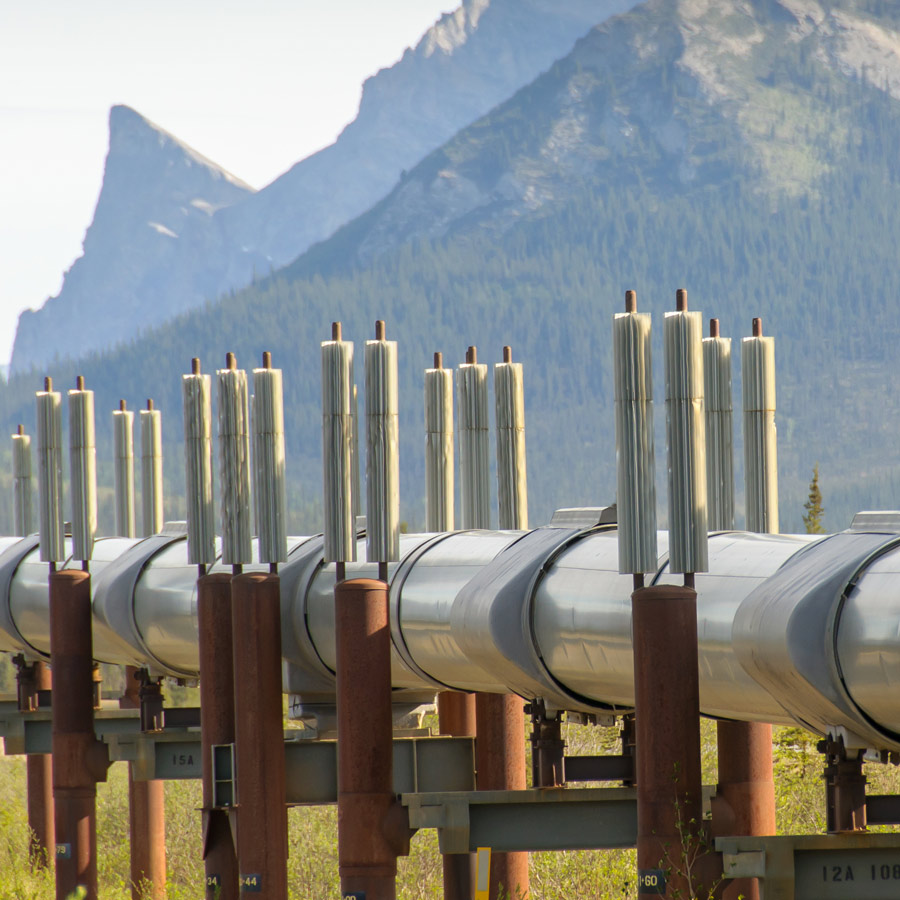
Converting Natural Gas Pipelines to Hydrogen
A variety of technologies, energy sources and approaches have been the focus of the global search for a greener future. While many renewable energy sources are being tested or are already in regular use, obstacles remain with storing and transporting this energy. Even though electrification helps in many areas, it is not appropriate for all situations. Hydrogen could be the solution for those applications. But to work on a large scale, H2 infrastructure like hydrogen pipelines needs to be established. Converting natural gas pipelines to hydrogen could help achieving this goal quickly and efficiently.
Green energies require new solutions
Renewable energy sources are often located in remote areas like offshore wind farms or hydroelectric plants in mountainous regions. In addition, their energy output fluctuates tremendously. This increases the importance of energy storage capabilities. The growing share of renewable energies in our energy mix increases the need for long-distance transport and storage.1
Ideal for transport and storage: hydrogen
Electricity can be used for both storage and transportation. However, it does not provide satisfactory answers to all energy challenges. It presents problems like energy loss or technical and economic inefficiency. In terms of storability and transportability over long distances, hydrogen proves superior.2 It can be stored and transported almost like fossil gas.
However, hydrogen is not considered a mainstream energy carrier. One reason for this is the lack of well-established H2 infrastructure, like hydrogen pipelines. A new approach might help solve this problem relatively quickly and economically, converting natural gas pipelines to hydrogen infrastructure.

H2 – a replacement for natural gas?
As the transition towards greener energy sources progresses, the need for a better hydrogen infrastructure will increase. Meanwhile, the infrastructure used for fossil energy carriers will be used less frequently. Therefore, it is logical to try using existing natural gas infrastructure for hydrogen applications. There are several projects exploring the technical and economic feasibility of this option.3
Already reality: hydrogen in natural gas pipelines
While some undertakings explore the feasibility of blending hydrogen and fossil gas4, others are focused on transporting pure H2 by converting natural gas pipelines to hydrogen use.
In countries like France, Germany, Japan, Switzerland, the United Kingdom and the United States, mixing of up to 20 % hydrogen to fossil gas streams has proven to be possible without affecting the pipelines.5 This way, the carbon footprint of some natural gas applications is already reduced in regular operation.
Converting natural gas pipelines to hydrogen
Using pure hydrogen in conventional gas pipelines is a relatively new process. Initially, concerns arose that the H2 might damage metal pipelines due to hydrogen embrittlement. This has proven not to be the case.
With conventional gas pipelines, only components like pumps, compressors, measuring and control units need to be replaced when switching to a blend of 25 % hydrogen or higher. Inner lining of pipelines or other large-scale modifications are not necessary.6
Hydrogen in natural gas pipelines: comparable capacities
Hydrogen and natural gas differ tremendously in their energy density by volume. H2 offers roughly 1/3 of the energy fossil gas carries in the same volume. This seems problematic at first glance, as this would mean that a pipeline previously transporting natural gas would deliver only a third of the energy when turned into a hydrogen pipeline.
However, this is not the case as hydrogen is far less dense than fossil gas, allowing for higher flow rates. A natural gas pipeline repurposed for hydrogen can still deliver 80 to 90 % of the original energy transport capacity under otherwise identical conditions.7
How KNF can help converting natural gas pipelines to hydrogen
With decades of experience in hydrogen applications, KNF understands the special requirements this energy carrier holds. KNF pumps are used throughout the world for H2 applications like transportation, processing, analysis, and delivery to fuel cells. For small-scale operations and lab applications, KNF also offers pipeline feed solutions. We provide pumps for natural gas pipeline applications like leak detection.
Based on a proven modular approach, the pumps can be customized to almost every application. KNF can quickly deliver high-quality pumps that offer outstanding safety and reliability and are tailored to specific applications like using hydrogen in natural gas pipelines.
Find out more about hydrogen applications of KNF pumps.
References
1 Khan, N., Dilshad, S., Khalid R., Kalair, A. R. & Abas, N. (2019). Review of energy storage and transportation of energy. Energy Storage. Retrieved January 7, 2022 from https://doi.org/10.1002/est2.49
2 Semeraro, M. A. (2021). Renewable energy transport via hydrogen pipelines and HVDC transmission lines. Energy Strategy Reviews, Volume 35. Retrieved January 7, 2022 from https://doi.org/10.1016/j.esr.2021.100658
3 Brezonick, M. (2020). European Consortium Plans Repurposed Hydrogen Pipeline. Diesel & Gas Turbine Worldwide. Retrieved January 7, 2022 from https://www.dieselgasturbine.com/8009372.article
4 Jewkes, S. (2020). TAP pipeline explores feasibility of blending hydrogen. Retrieved January 7, 2022 from https://www.reuters.com/article/tap-hydrogen-study/tap-pipeline-explores-feasibility-of-blending-hydrogen-idUKKBN28J2EH
5 NREL. (2020). HyBlend Project To Accelerate Potential for Blending Hydrogen in Natural Gas Pipelines. Retrieved January 7, 2022 from https://www.nrel.gov/news/program/2020/hyblend-project-to-accelerate-potential-for-blending-hydrogen-in-natural-gas-pipelines.html
6 Nationaler Wasserstoffrat. (2021). Wasserstofftransport. Retrieved January 7, 2022 from https://wasserstoffwirtschaft.sh/file/nwr_wasserstofftransport_web-bf.pdf
7 Ibid.
75 Years: KNF Celebrates Company Anniversary
A treasure chest filled with memories, facts and stories. Learn more about KNF’s company history.




